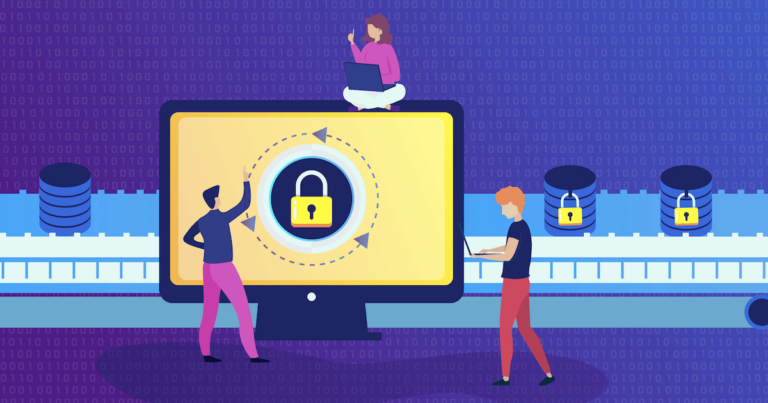Cloud security refers to using technologies, processes, controls, policies and combining them all to protect cloud-based systems, data and infrastructure. Though it is considered a sub-domain of computer security and more broadly comes under information security, as data is stored on the cloud, security posture changes with which customers and CSPs should be familiar. Here are some of the best practices that customers and cloud service providers must follow to overcome a new set of challenges with cloud-based deployments.
1. Choose A Trusted Provider
The foundation of cloud security best practice highly relies on your trusted service provider. Therefore, you must find and connect with a CSP that delivers the best in-built security protocols and agree to the highest levels of industry best practice. Go with a CSP that extends a marketplace of partners and solutions to bring you more security options for your deployment. Don’t mind checking the range of security compliance and certifications they hold. Although CSPs make publicly available the certifications and security compliance documents, for instance, AWS and Azure, you should cross-check to confirm their security compliance and certifications.
2. Understand Your Shared Responsibility Model
“Cloud is a shared responsibility.” When you move your IT infrastructure and put the data to the cloud, you develop a partnership of shared responsibility and accountability for security implementation with your CSP. However, security in the cloud is your responsibility and security of the cloud is CSP’s responsibility. A critical part of best practice is to review and understand your shared responsibility. Learning which security tasks you should take care of and which tasks should be taken care of by the provider provides you transparency and clarity. Make sure you review shared responsibility model documents online shared by all leading CSP including AWS, Azure, and Google.
3. Review Your Cloud Provider Contracts and SLAs
Security best practices also include an in-depth understanding of the contracts and SLAs with your cloud provider if you are not doing it or are not serious about it. SLAs and contracts are your only beholdings and recourse in the event of an incident. A contract and SLA include more than terms and conditions like annexes and appendices that could hamper your security. A contract technically defines your and your service providers’ individual responsibilities regarding data security.
If you don’t find the contracts and SLAs transparent or non-negotiable, you must seek alternatives to mitigate the risk through encryption, monitoring, or even an alternative provider.
4. Establish Zero Trust Policy
Zero Trust is a security concept that focuses on the belief that organizations should not automatically trust anything inside or outside their perimeter and instead try to connect to their systems before being granted access. Everything else should be verified. The basic concept is to cut off all access until the network knows who that user is and whether they are authorized.
5. Data Masking
Data masking is a process of replacing sensitive data with non-sensitive data. For instance, credit card numbers are replaced with an asterisk. Data masking is also about deleting sensitive data from a file. These approaches are highly effective when files contain sensitive information along with other information that needs to be made widely available.
6. Train Your Users
Provide training to your employees and stakeholders so that the awareness helps them quickly identify and report such potential threats that could compromise the company’s critical data and systems, such as phishing, malware, ransomware, and spyware. The training provides them exposure to all the potential risks. This knowledge enables them to be aware of and understand the dangers of social engineering and build the confidence to take appropriate actions to protect your business with security best practices.
7. Control User Access
Access management and keeping tight control over it is yet another cloud security best practice. It is executed by building three capabilities; first is to authenticate and authorize users, second is to assign user access rights, and third is creating and enforcing access policies for resources. It provides you a complete insight into the users attempting to access your cloud services. You may find it complex to execute initially, but there is a way since you can implement policies, create well-defined groups with assigned roles and only grant access to chosen resources. You can add users to groups, and it will automatically bring them access rights based on defined policies applied to the specific group. No longer do you need to customize access for each individual user.
8. Implement Endpoint Security
Securing user endpoints is another cloud security best practice. There is a large number of users accessing cloud services through desktops, laptops and mobile devices. Earlier, antiviruses are meant to secure endpoints, but these are no longer effective against today’s sophisticated threats. After the covid19 outbreak, as the whole workforce has been sent to remote locations where users increasingly access cloud services from personal devices, it is vital to implement an endpoint security solution to protect end-user devices. The strategic use of firewalls, antivirus, internet security tools, mobile device security, intrusion detection tools, and other methods is proven effective for user endpoints protection.
9. Get Visibility Over Your Cloud Services
Cloud services can be diverse and short-lived. Companies are using multiple cloud services of multiple providers across a range of geographies. Many pieces of research conducted in the past have suggested that cloud resources have an average lifespan of two hours. This kind of resource allocation and utilization leaves blind spots in any cloud environment. If you find similar incidences with your cloud solution, you must act quickly and use a solution that offers visibility of your entire ecosystem. A single portal or a centralized console provides you visibility over all your disparate resources, projects and regions through one single portal. This visibility allows you to monitor and protect cloud usage by implementing granular security policies while reducing a wide range of risks.
10. Implement Encryption
In cloud services, you store your data on a third-party platform. It exposes your data to increased risk as it is sent back and forth between your network and the cloud service. Though a cloud offers built-in encryption services and assures data protection from outside parties, they also afford access to your encryption keys. In such situations, it is best to implement the highest encryption levels for data both in transit and at rest. Moreover, you can use your own encryption solutions before uploading data to the cloud, using your own encryption keys to ensure full control. Though using your own encryption key will increase your administrative efforts, sometimes there is a compliance requirement to not store the encryption keys with the cloud providers.
11. Implement a Strong Password Security Policy and Multi-Factor Authentication
No matter which service you are accessing, a strong password and authentication policy should be in place. Implementing the strongest policy possible is a crucial element in preventing unauthorized access to sensitive data. Implement policies thoroughly that require users to change the password every 90 days. On the other hand, multi-factor authentication prompts users to show an additional form of identification during sign-in. Security measures like these make a difference in defending against most brute force attacks. A strong security policy and multi-factor authentication work as an additional layer of security best practice and protection.
12. Use a Cloud Access Security Broker
CASB is a software tool or service becoming a central point between an organization’s on-premises or remote infrastructure and a cloud provider’s infrastructure. It acts as a mediator, examines cloud traffic and extends your security controls by examining cloud traffic. It also provides a set of advanced security tools that provides visibility of your cloud ecosystem, Enforce cloud application management policies in existing web proxies or firewalls, detect and block unusual account behavior indicative of malicious activity, encrypt or tokenize sensitive content to enforce privacy and many others while maintaining compliance.
Conclusion
Although all the leading cloud providers offer robust security for cloud solutions they provide, protecting content and applications from attacks or data breaches is customer responsibility. Your cloud provider provides you all the essential tools and security documents such as SDKs, one central console and others, helping you integrate additional security features into your systems. Just make use of all the tips and techniques and the above-mentioned best practices to grow your business without worrying about cloud-based IT security.




